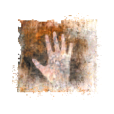Please wait a few moments while we process your request

Kathryn Farley
Sonia Sheridan & Generative Systems
Introduction
In 2006, I was awarded a Grant for Researcher in Residence by the Daniel Langlois Foundation to chart the history of the Generative Systems, a groundbreaking instructional program founded in 1970 by Professor Sonia Landy Sheridan at the School of the Art Institute of Chicago, and trace its seminal impact on the development of technological arts education. My project aims to investigate the program’s founding ideology, core curriculum and organizational structure in order to chart the ways in which Sheridan’s methods of instruction gave rise to a new pedagogical framework from which to explore the implications of emerging communications technologies on art production. Drawing on diverse archival resources in the Sonia Landy Sheridan fonds (course syllabi, lesson plans, administrative documents, photographs of class sessions, student assessment questionnaires and copies of assignments, video and audiotape documentation of instructional activities) and recent interviews with Professor Sheridan, the study attempts to offer a comprehensive account of the evolution of Generative Systems and link its development to the emergence of art and technology studies at the post-secondary level.
Working in close contact with Web designer, Ludovic Carpentier, and archivist Vincent Bonin, we conceived of an interface that illuminates the complex matrix of ideas, processes and practices that Generative Systems gave rise to, drew inspiration from and transformed during its lifespan. Information is arranged within the matrix in a way that emphasizes the interconnected components of the program, helping to demonstrate its collaborative, experimental and process-oriented features in real-time. To navigate the map, you are encouraged to begin on any point on the grid. It might help to know that the categories located in the center of the matrix (marked in blue) provide detailed information about a central aspect of the program, while the subjects appearing in yellow and red positioned on the outer perimeters refer to specific subjects within a category.
During the initial phase of research on the project, I traveled to Hanover, New Hampshire in order to conduct interviews with Professor Sheridan. Upon meeting her for the first time in person, I was struck by her mischievous spirit and joyous nature-qualities that played an integral role in crafting the ethos and operational structure of Generative Systems classes. It is my hope that this presentation will help to spread the word about Professor Sheridan’s important contributions to arts education as a whole and to the emergent field of technological art studies. In keeping with her innovative and insightful approach to teaching, the project has been designed to highlight the importance of play and creative exploration in devising experiential learning opportunities for students.
Working in close contact with Web designer, Ludovic Carpentier, and archivist Vincent Bonin, we conceived of an interface that illuminates the complex matrix of ideas, processes and practices that Generative Systems gave rise to, drew inspiration from and transformed during its lifespan. Information is arranged within the matrix in a way that emphasizes the interconnected components of the program, helping to demonstrate its collaborative, experimental and process-oriented features in real-time. To navigate the map, you are encouraged to begin on any point on the grid. It might help to know that the categories located in the center of the matrix (marked in blue) provide detailed information about a central aspect of the program, while the subjects appearing in yellow and red positioned on the outer perimeters refer to specific subjects within a category.
During the initial phase of research on the project, I traveled to Hanover, New Hampshire in order to conduct interviews with Professor Sheridan. Upon meeting her for the first time in person, I was struck by her mischievous spirit and joyous nature-qualities that played an integral role in crafting the ethos and operational structure of Generative Systems classes. It is my hope that this presentation will help to spread the word about Professor Sheridan’s important contributions to arts education as a whole and to the emergent field of technological art studies. In keeping with her innovative and insightful approach to teaching, the project has been designed to highlight the importance of play and creative exploration in devising experiential learning opportunities for students.
Kathryn Farley © 2007 FDL
Index:
- Sonia Sheridan fonds
• Presentation
• Sonia Sheridan biography
• Vincent Bonin: Interview with Sonia
• Kathryn Farley: Interview with Sonia
• John Mabey: "Portrait of Sonia"
• Digitized slides and pictures
• Artworks and printouts
Related page:
 Sonia Sheridan fonds
Sonia Sheridan fondsThis fonds exemplifies the groundbreaking role played by Sonia Sheridan in the use of industrial photocopiers and early computer graphic systems as creative tools.


